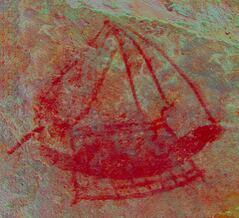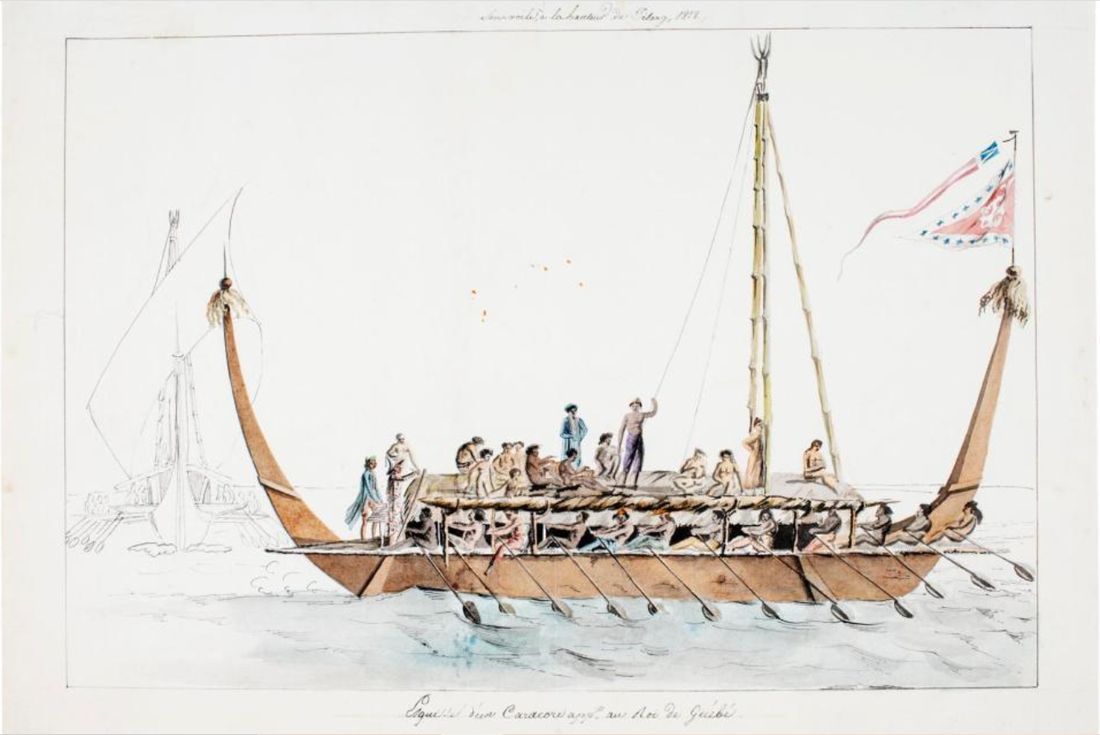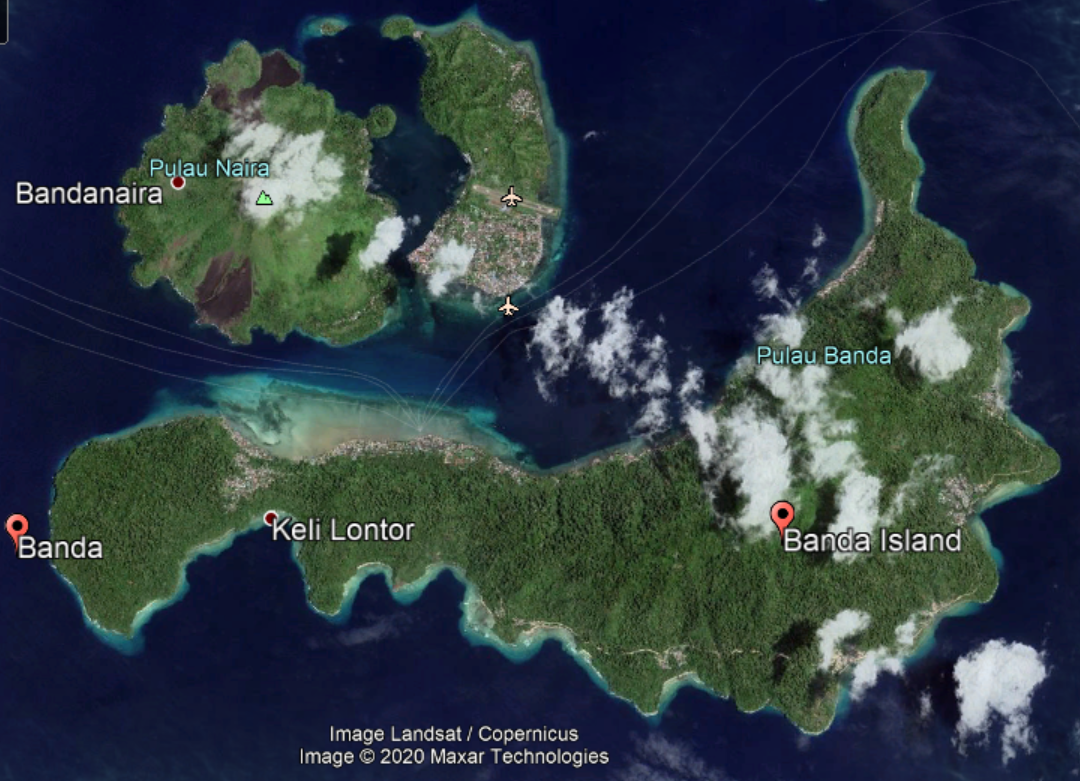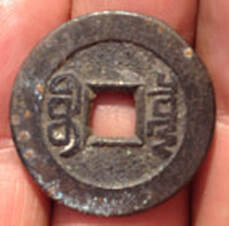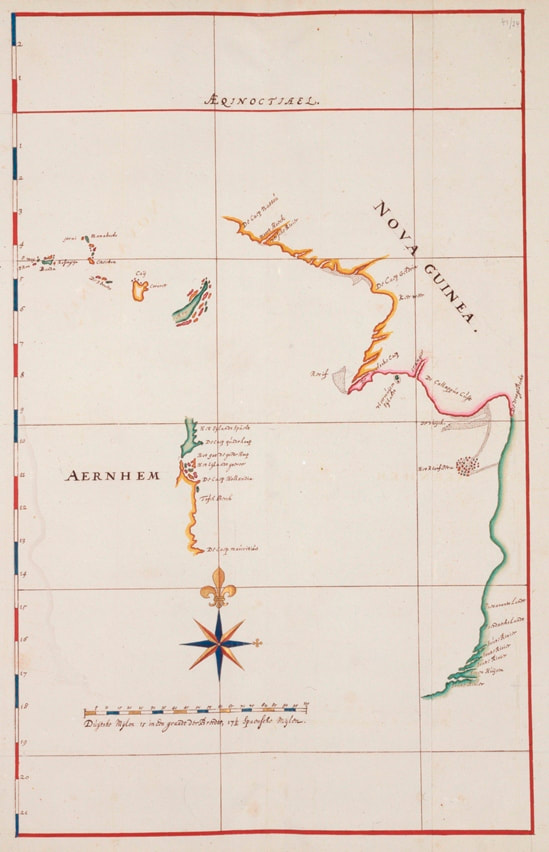EARLY CONTACT NORTH AUSTRALIA
Uncovering North Australia’s Pre-Macassan Visitor History
©Ian McIntosh, Daryl Wesley and Mike Owen
Citation:- McIntosh, I.S. et al 2020. Uncovering North Australia’s Pre-Macassan Visitor History. PastMasters Publishing Issue 2.
Abstract
Well known to Australian history are the annual trepang voyages of Macassan fishermen from Sulawesi in Indonesia. From the mid-1700s, they plied their trade in close proximity to, and often in co-operation with, the Yolngu and other Indigenous peoples of northern Australia. The detailed work on Australia’s first international industry, by historian Campbell Macknight, has helped to break down the Eurocentric vision of Australia’s past that focused on Dutch explorers and English colonisers (Macknight 1976). But now it is time to look further back into our continent’s history to even earlier visitors, about whom actual documentation is scarce or non-existent, but small isolated archaeological finds, rock art and oral tradition are rich in detail.
Introduction
|
The discovery of a rock art painting of a double-outrigger sailing vessel in association with at least one outrigger canoe near Cape Wessel, in north-east Arnhem Land, is the first tangible evidence of non-Macassan and non-European cultural contact in northern Australia.
The depicted vessel is starkly different to that of the Macassan praus of the trepang fishing fleets used in the 18th to 20th centuries and resembles a Kora Kora, a type of warship once common in Indonesia’s Maluku province. |
Research
The search for these faint traces of a disappearing history has been the subject of recent Flinders University archaeological fieldwork led by Daryl Wesley on islands in north-east Arnhem Land, in partnership with the PastMasters network of independent scholars (www.pastmasters.net) including Ian McIntosh and Mike Owen, and the results paint a picture of cultural contact that may go back thousands of years.
 Proposed Kilwa Coin - Elcho Is.
Proposed Kilwa Coin - Elcho Is.
On a recent trip, for example, team member Michael Hermes discovered what is potentially an ancient non-European coin from the intertidal zone on Elcho Island raising again the elusive and undocumented nature of early contacts between Australia and islands in Southeast Asia and beyond. We speculate that it is a Kilwa coin from the Swahili Sultanate, in what is now Tanzania (McIntosh 2018).
In 1944, five Kilwa coins dating from 1100-1400CE were found further along the Wessels chain on Marchinbar Island, a discovery that would later stimulate worldwide interest. The PastMasters network was established in 2011, following a conference at ANU on the legacy of the Macassan presence in north Australia, to investigate the possible pathways that led to the deposition of these rare artefacts—the oldest non-indigenous archaeological finds ever made in Australia.
In 1944, five Kilwa coins dating from 1100-1400CE were found further along the Wessels chain on Marchinbar Island, a discovery that would later stimulate worldwide interest. The PastMasters network was established in 2011, following a conference at ANU on the legacy of the Macassan presence in north Australia, to investigate the possible pathways that led to the deposition of these rare artefacts—the oldest non-indigenous archaeological finds ever made in Australia.
Rock Art as Artefact
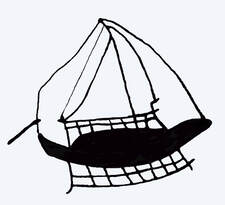 Outline of Wessel Islands ~ Kora Kora
Outline of Wessel Islands ~ Kora Kora
Our most exciting find to date, relating to pre-Macassan contact, has been the aforementioned rock art image of the Kora Kora. In the 1980s and 1990s, Yolngu elders would identify a group of pre-Macassan fishermen who used the double-outrigger sailing vessel as Wurramala, or dark-skinned whale hunters (McIntosh, 2015).
Significantly, the rock art painting is consistent with Yolngu oral history of this pre-Macassan cultural contact and challenges views that pre-Macassan contact is a conflation of Macassan and post-Macassan interactions of outsiders and Yolngu. It was easy for researchers to make such an assertion.
These indigenous Indonesian whale hunters are associated with the Yolngu land of the dead and narratives still current in Yolngu society are a curious mix of specific detail regarding their nautical culture, social structure and religion, and their mythical and mystical powers.
Significantly, the rock art painting is consistent with Yolngu oral history of this pre-Macassan cultural contact and challenges views that pre-Macassan contact is a conflation of Macassan and post-Macassan interactions of outsiders and Yolngu. It was easy for researchers to make such an assertion.
These indigenous Indonesian whale hunters are associated with the Yolngu land of the dead and narratives still current in Yolngu society are a curious mix of specific detail regarding their nautical culture, social structure and religion, and their mythical and mystical powers.
Also on the Wessel Islands is a rock art painting well known to indigenous and non-indigenous people that appears to be a map of the spice island of Banda, which features so prominently in Yolngu mythology and oral history.
The entire tableau shows the curious map, a sailing canoe under sail and what appears to be a dragon-headed serpent ship, or rainbow serpent, the two often being conflated in narratives and imagery. The rainbow serpent image by the distinguished West Arnhem Land artist Lofty Nadjamerrek, displayed at the Darwin International Airport, appears to replicate this image from the north-east Arnhem Land cave, and both bear a strong resemblance to images of the Kora Kora of eastern Indonesia. The Cape Wessel image is a more literal rendition of the sea craft, freed from its mythological context. Investigation of these small isolated archaeological finds by the Flinders University team and the PastMasters, is only just beginning, and will certainly play a significant role in shedding light on Australia’s pre-Macassan past. It is now evident that the artificial line demarcating zones of belief and influence between Australia and Indonesia, long advocated in the anthropological and archaeological literature, should now be erased.
Summation
There are many other clues that we are currently investigating to shed light on the pre-Macassan past in our work with Yolngu traditional owners. There is a very curious three-hundred year old burial of a non-Aboriginal woman at Elcho Island. Women were not usually crew members of the fishing praus. There is also a small network of coastal megaliths in north-east Arnhem Land that is most probably related to early navigation (McIntosh 2015). Most intriguingly, Yolngu oral history points to the establishment of the first non-Aboriginal settlement in Australia, in what is known as the Malay Road, in the mid-1600s. This site was not a trepang camp but a settlement of refugees from the Dutch and Bugis conflict with the Sultanates of Gowa and Tallo in what is now Macassar (see McIntosh 2015).
Representatives of the sultanates, including many of their servants, soldiers, and allies from subordinate island communities, fled to northern Australia to regroup, staying, by one estimate, for upwards of a quarter of a century. Arising from this period are major bodies of Dreaming Law, including Birrinydji and Bayini, evidenced in the ubiquitous mast and flag motifs seen throughout north-east Arnhem Land. These bodies of law grapple with the major power imbalance between Yolngu and outsiders, and the societal impact of an increasing number of Yolngu children born to non-Aboriginal fathers (see McIntosh 2013).
It is our hope that Arnhem Land will itself come to be recognised within the older and wider context of international visitation and that our work will enable its world class heritage assets to develop, as an ever-increasing resource, for the social and economic well-being of Arnhemlanders.
Bibliography
Macknight, C.C. 1976. The Voyage to Marege. Macassan trepangers in northern Australia. University of Melbourne Press, Carlton.
McIntosh, I.S. 2018. “Australia’s Kilwa Coins Conundrum.” Early Maritime Cultures in East Africa and the Western Indian Ocean. Papers from a conference held at the University of Wisconsin-Madison (African Studies Program) 23-24 October 2015. Edited by Akshay Sarathi. 113-137.
McIntosh, I.S. 2015. Between Two Worlds. Essays in Honour of the Visionary Aboriginal elder David Burrumarra M.B.E. DEP, Indianapolis.
McIntosh, I.S. 2013. The Unbirri Legacy, or How the Yolngu Became Black. In M. Clarke & S. May (eds). Macassan Heritage and History. ANU E-Press, Canberra.
Taylor, L. 1990. The Rainbow Serpent as Visual Metaphor in Western Arnhem Land. Oceania 60, 329-344
McIntosh, I.S. 2018. “Australia’s Kilwa Coins Conundrum.” Early Maritime Cultures in East Africa and the Western Indian Ocean. Papers from a conference held at the University of Wisconsin-Madison (African Studies Program) 23-24 October 2015. Edited by Akshay Sarathi. 113-137.
McIntosh, I.S. 2015. Between Two Worlds. Essays in Honour of the Visionary Aboriginal elder David Burrumarra M.B.E. DEP, Indianapolis.
McIntosh, I.S. 2013. The Unbirri Legacy, or How the Yolngu Became Black. In M. Clarke & S. May (eds). Macassan Heritage and History. ANU E-Press, Canberra.
Taylor, L. 1990. The Rainbow Serpent as Visual Metaphor in Western Arnhem Land. Oceania 60, 329-344
Biographical Notes
Anthropologist Ian McIntosh is the Director of International Partnerships at Indiana University’s Indianapolis campus. He is an adjunct professor in the School of Liberal Arts (Anthropology and Religious Studies) and also the Lilly Family School of Philanthropy. Ian is a co-founder of the PastMasters, a heritage and history collective dedicated to investigating Australia’s links to the outside world in the days prior to European expansion in the East Indies and New Holland.
Daryl Wesley is with Flinders University in Adelaide after relocating from ANU in Canberra. Since 1992 Daryl has worked in various roles studying, researching, and managing Indigenous archaeology and cultural heritage in Australia's Northern Territory. He completed his Masters in Aboriginal and Torres Strait Islander Studies at CDU on the archaeology and management of Indigenous cultural heritage places in Litchfield Park and the Reynolds River. His research interests include stone tool technologies, Indigenous settlement pattern analysis, and rock art recording. Major projects have included the repatriation of ancestral human skeletal remains to Aboriginal communities and, of special interest to the Past Masters, culture contact between Indonesians (Macassans), Europeans, and Indigenous communities in north western Arnhem Land near the Goulburn Islands and the Wellington Ranges.
Mike Owen is a Darwin based heritage consultant with 40 years’ experience of remote communities throughout the Northern Territory and across northern Australia. He has worked in the Rural & Remote Health, Aboriginal Affairs and Local Government sectors - is a co-founder of PastMasters. He maintains the image archive, captured & manipulated the images herein and is the webmaster for https://www.pastmasters.net
Download Paper
| uncovering_north_australia_pmp2.pdf | |
| File Size: | 1447 kb |
| File Type: | |
Key Words
Yolngu, Wessel Islands, Kora Kora, Banda, Mythology, North-East Arnhem Land, Maluku, Pre-Macassan
Sources & Resources
|
| ||||||||||||
|
| ||||||||||||
| macassan_wrecks_paul_clark.pdf | |
| File Size: | 1405 kb |
| File Type: | |
|
| ||||||||||||
Additional Material
William Westall recorded this rock art at Chasm Island at the northern end of Groote Eyland in December 1803. It depicts a ceremonial dance in which two double lines of paddlers behind the stroke leader wielding a woomera. The four lines with 6 paddlers in each represent the crew of a double outrigger canoe - they are led by a figure brandishing a woomera which is also an emblem of cultural authority. The dance is performed in mortuary ceremonies by the Warramiri people of NE Arnhemland.
"In the deep sides of the chasms were deep holes or caverns undermining the cliffs; upon the walls of which I found rude drawings, made with charcoal and something like red paint upon the white ground of the rock. These drawings represented porpoises, turtle, kanguroos and a human hand; and Mr. Westall, who went afterwards to see them, found the representation of a kanguroo, with a file of thirty-two persons following after it. The third person of the band was twice the height of the others, and held in his hand something resembling the whaddie, or wooden sword of the natives of Port Jackson; and was probably intended to represent a chief." Matthew Flinders 1803 Voyage to Terra Australis.
Banda Island
Pestles & Mortars
In 2016 the PastMasters were able to assist in the realisation of a dying wish to have these two sets accessioned by the Museum & Art Gallery of the Northern Territory. Whilst no analysis of the residue has been undertaken, the PastMasters have established that the items were found by the donor's brother in close proximity to the location of the rock art of the proposed Kora Kora. Unfortunately, analysis of the residue is expensive and is unlikely to be undertaken within the foreseeable future. Typologically they are SE Asian, Stone Mortar & Pestle (Ulekan & Cobek).
The items are of a design commonly found in the Halmahera area of North Maluku, Indonesia. Being found amongst the roots of a dead tree, beside a permanent water source suggests recurrent, seasonal visitation - echoing the Macassan habit of storing boiling cauldrons under tamarind trees away from the storm surge zone. In conjunction with the hazardous nature of Wet Season sea travel - as documented in 'The Voyage to Marege' (Macknight 1976) and (Clark 2015) - when combined with the seasonal scarcity of freshwater, it is suggested that these oases were well known in ancient times. To therein cache provisions for shipwreck survival, would be a rational initiative.
18th Century Chinese Coin - Elcho island
The coin was found on the beach in the vicinity of a known Macassan trepang processing site. The Macassans, from Sulawesi in Indonesia, are known to have commercially fished north Australian waters for trepang (sea cucumber) from about the mid-1700s until 1907.
The trepang trade is Australia’s first documented export industry and one in which many Aboriginal people were intimately involved in pre-colonial times. Macassans would sell the trepang harvested on the beaches of north Australia to the Chinese. For Chinese people, trepang was a rare delicacy with aphrodisiac properties.
The trepang trade is Australia’s first documented export industry and one in which many Aboriginal people were intimately involved in pre-colonial times. Macassans would sell the trepang harvested on the beaches of north Australia to the Chinese. For Chinese people, trepang was a rare delicacy with aphrodisiac properties.
Prof. Tiequan Zhu of Sun Yat-Sen University in Guangzhou has identified the brass coin as being from the Qing Dynasty and made during the reign of the Emperor Qianlong (1736-1795 AD). Two Manchurian characters on one side of the coin indicate that it was minted at the Chinese Central Government’s coin manufacturing factory at Baoquan in Beijing. Noted Australian numismatist and member of the Past Masters, Mr. Peter Lane of Adelaide, agrees with Prof. Zhu’s analysis.
The coin find was made by Nenad Lonic of Minelab Adelaide SA, using a metal detector supplied for the ‘Past Muster’ by the Minelab Corporation. Dr. Ian McIntosh of Indiana University and a co-founder of the PastMasters, proposes that the Chinese coin discovery provides further opportunity for re-writing Australian history - as it suggests that Australia was trading with the Middle Kingdom in the period before it became a British colony.

